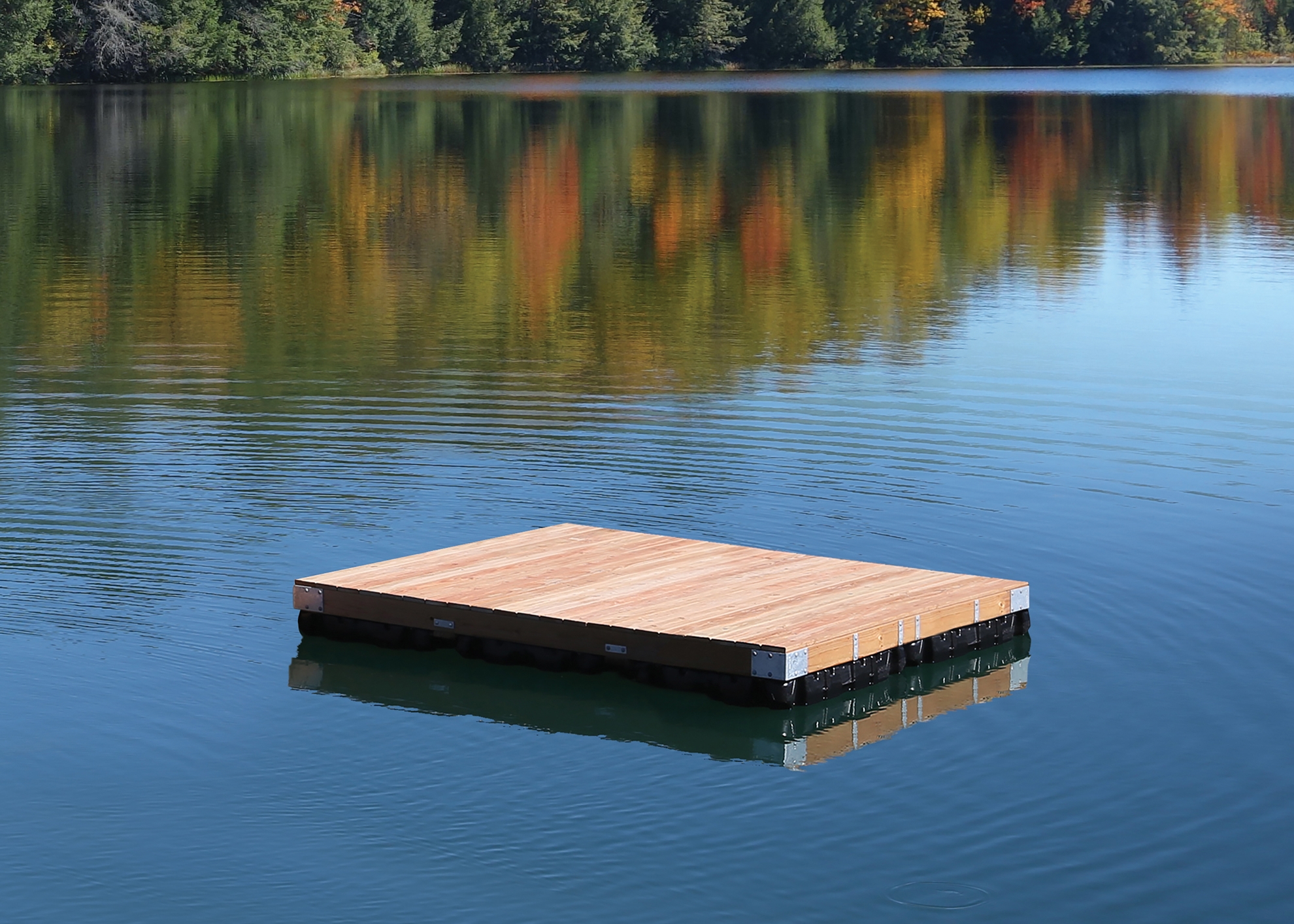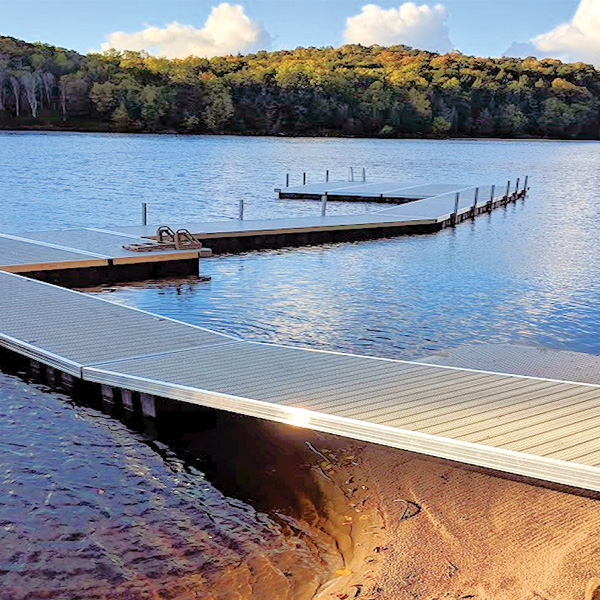Discover the Perfect Floating Dock Builder to Bring Your Waterfront Vision to Life
Discover the Perfect Floating Dock Builder to Bring Your Waterfront Vision to Life
Blog Article
Develop the Perfect Docking Service With Floating Docks
Floating docks present a versatile solution for a variety of maritime demands, adjusting seamlessly to changing water levels and diverse vessel types. As we check out the vital aspects that add to the performance of floating docks, several vital variables concerning stability and upkeep will certainly emerge, raising questions about how to optimize your docking experience.

Benefits of Floating Docks
Floating docks deal various benefits that make them an ideal selection for different maritime applications. Among the key benefits is their flexibility to altering water levels. Unlike repaired docks, floating docks surge and fall with the tide, making certain consistent availability for vessels. This feature is especially essential in areas vulnerable to substantial tidal variations or seasonal water level modifications.
Furthermore, floating docks are commonly simpler and quicker to install contrasted to conventional set structures. Their modular style permits uncomplicated setting up and disassembly, facilitating maintenance and moving when required. This flexibility is especially beneficial for momentary applications or in settings where conditions might alter.
Floating docks additionally have a tendency to be much more ecologically friendly, as they minimize disturbance to the seabed and bordering marine ecosystems. Their buoyant nature minimizes the danger of damages to aquatic life, promoting a healthier environment. In addition, these docks can be personalized to fit numerous vessel sizes, guaranteeing that they meet specific functional demands - floating dock company.
Ultimately, the combination of versatility, ease of setup, and environmental considerations makes floating docks a very effective service for a large range of maritime needs.
Picking the Right Materials
Choosing the suitable materials for floating docks is important to make certain durability, longevity, and stability. The option of products straight affects the dock's performance in various ecological conditions, including direct exposure to water, sunshine, and possible wear from marine website traffic.
Common materials made use of for floating docks include aluminum, timber, and high-density polyethylene (HDPE) Aluminum is lightweight, corrosion-resistant, and calls for minimal upkeep, making it an excellent selection for long life. Its preliminary expense can be higher compared to various other products.
Wood, while visually appealing and providing a typical look, can be vulnerable to rot and insect damage if not appropriately dealt with. As a result, using pressure-treated timber or naturally long lasting varieties like cedar or redwood can mitigate these concerns.
HDPE is a popular choice as a result of its resistance to UV rays and chemicals, in addition to being ecologically pleasant. floating dock builder. It is available and lightweight in different colors, permitting personalization
Inevitably, the appropriate product selection will certainly depend upon certain needs, consisting of spending plan, preferred visual appeals, and environmental factors to consider. Careful analysis of these factors will lead to a successful and resistant floating dock remedy.
Design Factors To Consider for Stability
When designing floating docks, guaranteeing security is a basic element that can significantly influence their functionality and safety. Security in floating dock layout is influenced by various elements, including buoyancy, weight distribution, and the arrangement of components. An optimal buoyancy system must use materials that offer adequate lift while reducing weight. This balance anonymous makes certain that the dock remains above water, also under varying lots.
Weight circulation is critical; evenly distributing lots across the dock avoids turning and enhances stability. Broader styles can provide increased stability, particularly in rough water conditions, while longer docks might call for extra supports to protect against drooping.
Another key factor to consider is the environmental impact, including wave action and wind. Incorporating attributes such as sidewalls or skirting can aid mitigate the results of ecological pressures, keeping stability in negative problems. Inevitably, a combination of thoughtful style, material option, and understanding of environmental aspects will produce a floating dock that meets both stability and security requirements.
Setup Tips and Methods

Following, safeguard the necessary authorizations and follow local regulations, which might determine installment approaches and ecological considerations. Engage a certified service provider experienced in floating dock installments if required. Usage top quality products designed for aquatic environments to enhance toughness and durability.
When placing the dock, straighten it parallel to the coastline to help with easy accessibility. click for source Make sure that the anchoring system is durable, employing cinder block or helical supports to maintain the dock versus wind and wave activity. It's crucial to represent seasonal water level changes, including prospective ice movement in cooler climates.
During the installation, verify the dock's floatation and security prior to finalizing the anchoring. Regularly evaluate the installation for any signs of wear or damages. By adhering to these methods and tips, you can accomplish a secure, useful, and aesthetically pleasing floating dock setup that satisfies your demands.
Upkeep and Care Standards
Caring and preserving for floating docks is important to extending their life-span and making sure safe use. Regular inspections must be conducted to recognize any indications of wear, damage, or aquatic development. Try to find cracks, loosened fittings, or tarnished areas on the dock's surface, as these issues can endanger architectural honesty.
Cleansing is vital. Use a pressure washing machine to remove algae, barnacles, and particles, which can build up gradually. For stubborn growth, think about eco-friendly cleaner that won't hurt aquatic life.
Furthermore, check the mooring lines and supports regularly to ensure they are safe and secure and totally free from deterioration. Replace any kind of frayed or damaged lines promptly to keep stability.
During severe weather condition, such as tornados or freezing conditions, take preventive actions. Protect the dock with added mooring lines and, if practical, get rid of any type of removable components to stop damages.
Final Thought
Finally, the execution of floating docks presents a flexible and efficient docking remedy ideal for numerous maritime applications. Their flexibility to rising and fall water degrees, incorporated with a modular design, enables for very easy modification and moving. Selecting ideal materials enhances both resilience and visual appeal, while careful factor to consider of stability guarantees safety and security and long life. With correct installment and regular maintenance, floating docks can offer efficient and reliable docking experiences for a vast array of vessels.
As we my explanation discover the important components that add to the efficiency of floating docks, numerous key elements concerning stability and upkeep will emerge, elevating concerns about exactly how to enhance your docking experience. Unlike taken care of docks, floating docks rise and fall with the tide, guaranteeing regular accessibility for vessels.When creating floating docks, guaranteeing stability is a fundamental element that can dramatically influence their capability and security. Security in floating dock design is affected by different variables, consisting of buoyancy, weight circulation, and the setup of components. Ultimately, a mix of thoughtful layout, material choice, and understanding of ecological elements will certainly generate a drifting dock that meets both stability and security demands.
Report this page